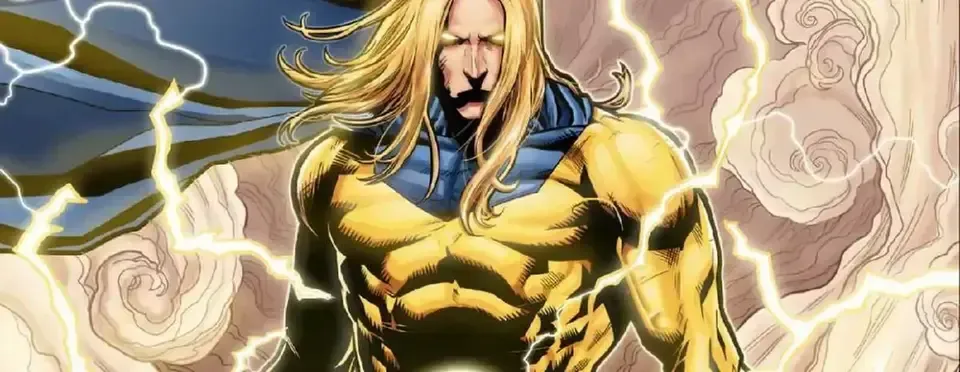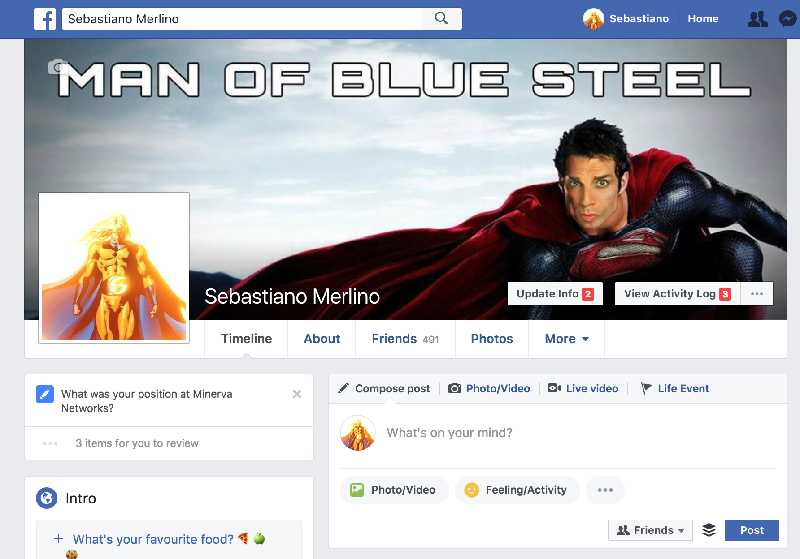
M.L. BLACKBIRD

04 DECEMBER 2017
SENTRY: A GODLIKE CHARACTER THE RIGHT WAY
In this post I use Marvel’s character “The Sentry” ad an example of how to write a story where the protagonist is an all powerful character.

This time I want to talk about Sentry.
Before we do that, let’s take a look at a screenshot of my personal Facebook profile.

From this photo we can understand two things:
- I am probably an idiot.
- The blond shining guy with an “S” on his belt straight on my profile photo.
That guy is Sentry. So, as you may guess, I might be a bit biased.
Now, before the experts come along moaning how crap this character is: I am talking about the Sentry from his own special issues. I tend to agree with the folks saying the character was destroyed in other comics. I still believe though that the Sentry we see in the dedicated comics is a different story.
Let’s take a look at the story of the specials while keeping the focus on its protagonist.
The Sentry: premise and plot
At the beginning of the story, Sentry is the most popular superhero on hearth. The man with the power of “a million exploding suns”. Everybody considers him a sort of godly figure (the golden guardian) – even other superheroes rely on him when going through a crisis.
The Sentry seems perfect and invincible.
He is still human though. The Golden Guardian has way too many responsibilities from being a god and Robert Reynolds (the man behind the mask) cannot cope with it.
Incapable of saving everybody on the whole planet all the time, he reveals he is also incapable of choosing who should be saved. To manage his activity as an hero, Robert relies on an artificial intelligence (CLOC). The system chooses who should be saved and who should be left to their destiny.
Even the relationship between the hero and his wife is damaged. Lindy doesn’t show any interest in his husband anymore. They fight over the time he spends away from home, arguing at parties in front of their friends and don’t have a sexual life anymore: Linda being not interested in Robert and turning to the Sentry to search for any excitement.
To deal with the stress of his existence, Robert turns to a psychiatrist: Dr. Cornelius Worth.
Everything gets even worse when an incident happens. The only one who could be responsible is “The Void”, Sentry’s archenemy. This is impossible though. The Void has been defeated and he is now confined within CLOC’s tower. Robert starts visiting him as the Sentry to make sure he really is still safely imprisoned.
The story flips completely on its head when CLOC calls out for Cornelius help behind Roberts’ back. The machine apparently wants him to visit the Void.
A godlike character
Dealing with a character like Sentry is really hard. There were thousands of ways I can think of it going completely south, especially in a genre targeting younger audiences. I won’t list here all the superpowers that Marvel decided to give to this guy because I could fill another post with that.
Despite this, the story doesn’t spend all of its time showing him off and getting him to kill the bad guys. Sure, it shows us Sentry single-handedly defeating Terrax – a villain established by the canon as being immensely powerful. It stops there though. It establishes how strong Sentry really is and then it spends the rest of the time showing how all this is completely useless to him.
Will all these powers help him keep his wife? Can he save everybody on the planet? Will he ever be able to take responsibility?
These are the problems the story focuses on. This helps us get the god in front of us and see him as weak as we are. It is interesting to see someone so powerful having to deal with something his powers are useless against.
The story plays even more on these notes to the point that it decomposes the role of the hero and the villain in front of our eyes. It asks us questions on what a hero (in this case a god) should be, what are the limits of their actions and responsibilities, how should they manage their own life.
This is how a writer should use an all powerful character: to ask the hardest questions. We shouldn’t be using such characters carelessly because otherwise all we would obtain are boring, flat stories.
Revelations [contains spoilers]
Such deconstruction continues to the point of blending together hero and villain. When Dr. Cornelius finally visits Void’s cell inside CLOC’s tower he finds just a chair and a mirror. Void and Sentry have been the same person the whole time.
Let’s stop here. We might need some background before we keep going.
Sentry has already been the most important hero on earth once before. He appeared because the young Robert, a meth addict, searched for new emotions in what he believed to be a meth lab. He ended-up ingesting an experimental super-soldier serum that gave him the power of a million exploding suns by enabling him to absorb the power of a galactic entity.
The meth addict cleaned himself. He became a hero, the most powerful one and a model to all the other heroes to come.
One day though, the Void appeared.
For every person Sentry could save, Void will kill somebody else. This led to the massacre of a million people with Sentry finally deciding something drastic. Till Sentry existed, Void would exist too. Because of this, Sentry decided to make everyone in the world, included himself, believe that he never existed, thus deleting Sentry and with it the Void.
Back to the present, Robert has remembered about Sentry and so also the Void is back. Imagine how devastating can be for a hero, and especially one who is practically a God, to discover that he and his nemesis are one and the same. The story goes even further by stating that Void is the real product of the serum. Sentry is merely a byproduct of Robert’s guilt.
Again, this is pretty strong from a storytelling point of view. The writer builds an invincible character. They then give him weaknesses he cannot really fight against by using all their powers. The author then renders useless everything the hero does (for every person saved one is killed). They then descend to the point where he turns into the villain.
This is the lowest point for the character’s arc. At this point, Robert has to climb back up again. Discover what’s real and what is not. Battle its ghosts and his own evil plan. From this point of view, we have again the usual “Hero Journey” but it is all made more interesting by the premise.
Conclusion
I definitely recommend to read Marvel’s Sentry special issues. They are pretty good examples of how to handle a character who is incredibly powerful and how to do so while also deconstructing and reconstructing the figure of a hero.
All in all, I think I am going to keep this guy as my profile photo on Facebook – well deserved.